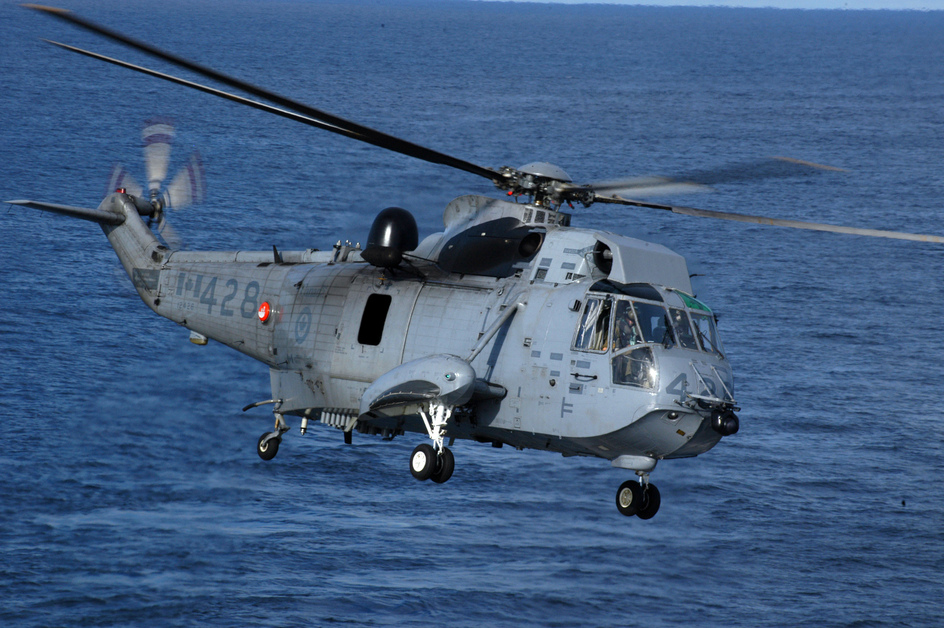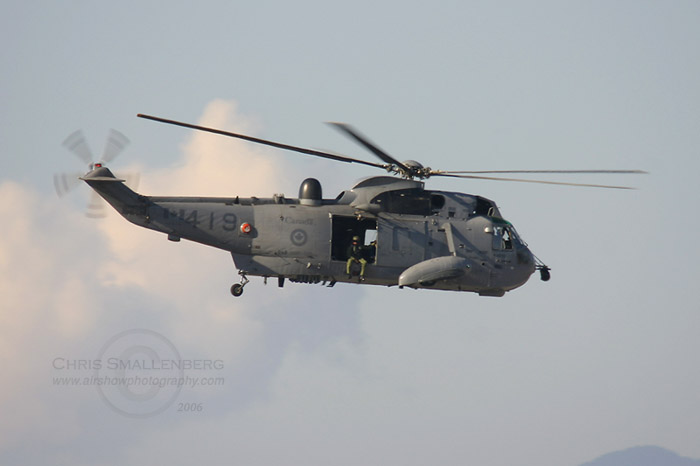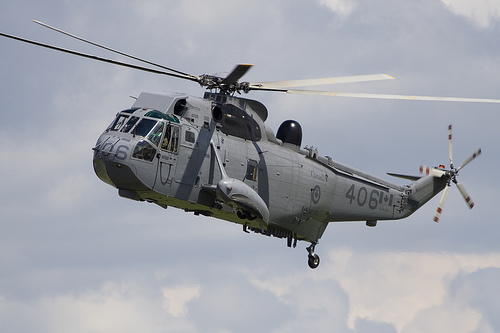A ship-borne maritime helicopter, the CH-124 Sea King lives up to its name with its unique capabilities. The aircraft’s compact design boasts a fold-up rotor and tail that help it to fit on even the smallest warship’s deck, and its amphibious hull lends it the ability to land on water.
The CH-124 is powered by two turboshaft engines and is equipped with subsurface acoustic detection equipment and homing torpedoes. Employing these, the Sea King lifts off from destroyers and frigates to locate and destroy submarines.
Capable of flying in day or night, the CH-124 is a versatile surveillance aircraft. It was procured mainly for anti-submarine warfare (ASW), but has expanded its role since coming into service in 1963. Domestically, Sea Kings contribute to search and rescue (SAR) operations, disaster relief, counter-narcotic operations, and fisheries and pollution patrols.
The helicopter also plays a vital role in international peacekeeping operations. It has been heavily committed to the international campaign against terrorism. Since being deployed to the Persian Gulf in 2001, CH-124s have conducted hundreds of missions to transport troops and locate suspicious vessels. Indeed, the Sea King remains one of the busiest aircraft in Canada’s Air Force. The Sea King is set to be replaced by the CH-148 Cyclone.


